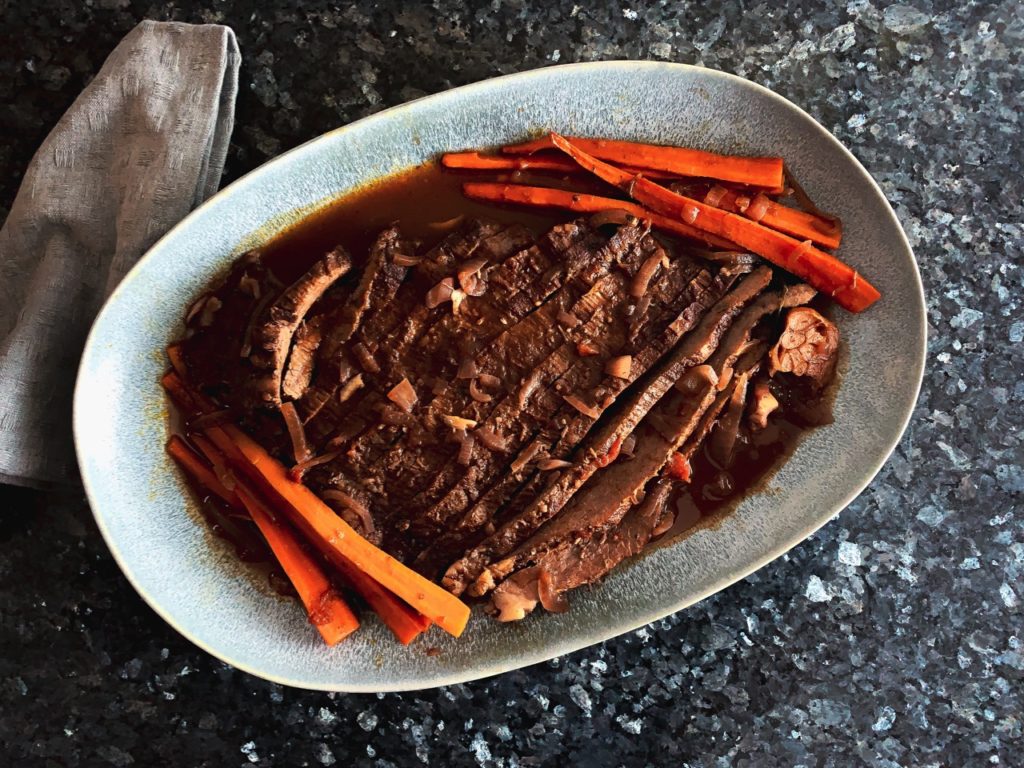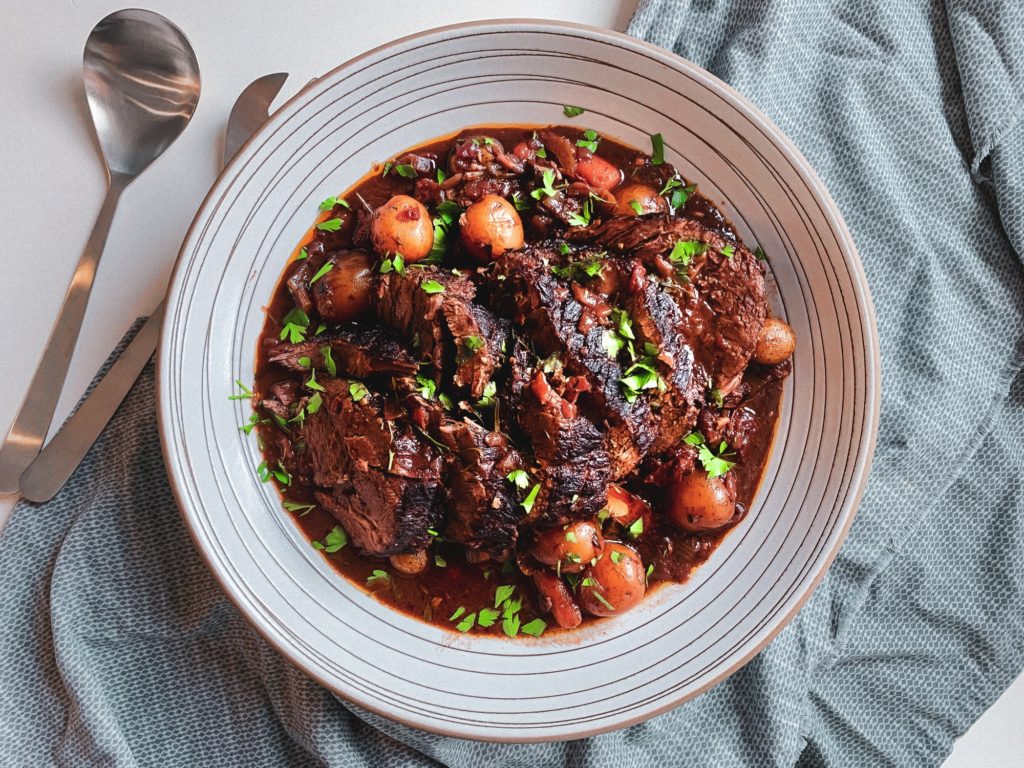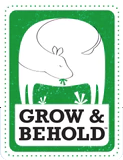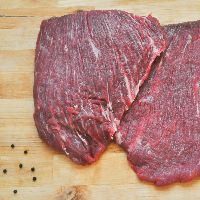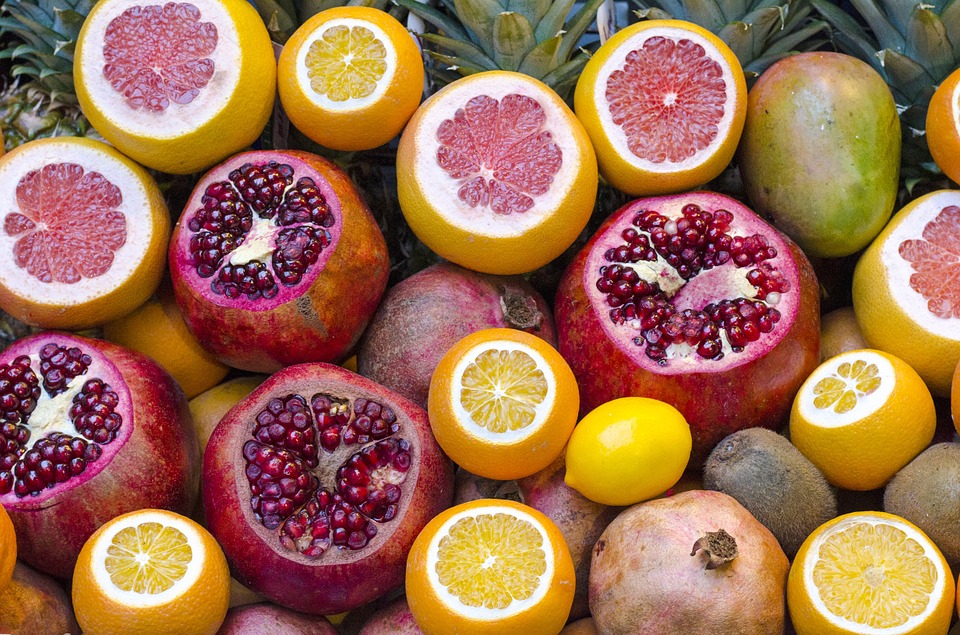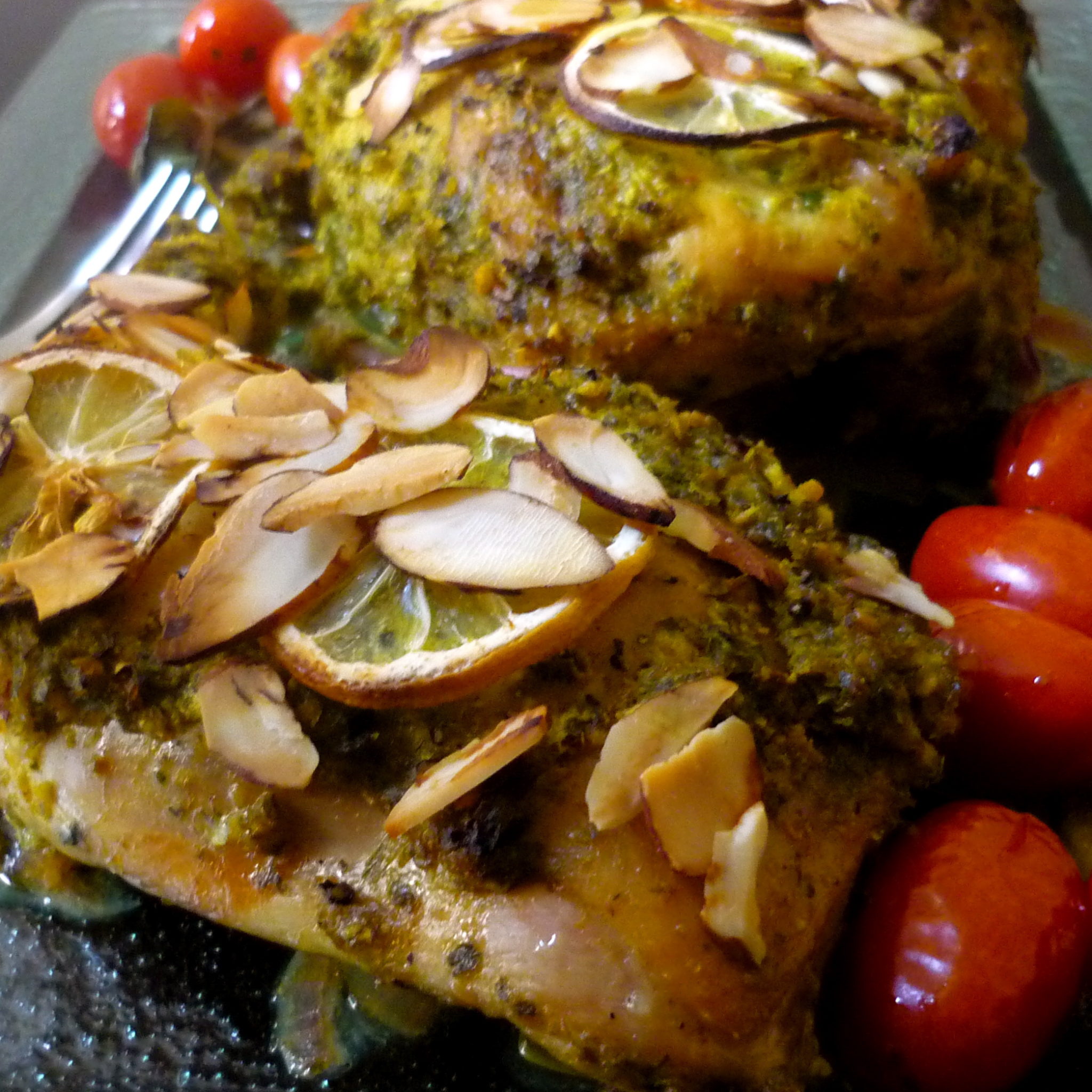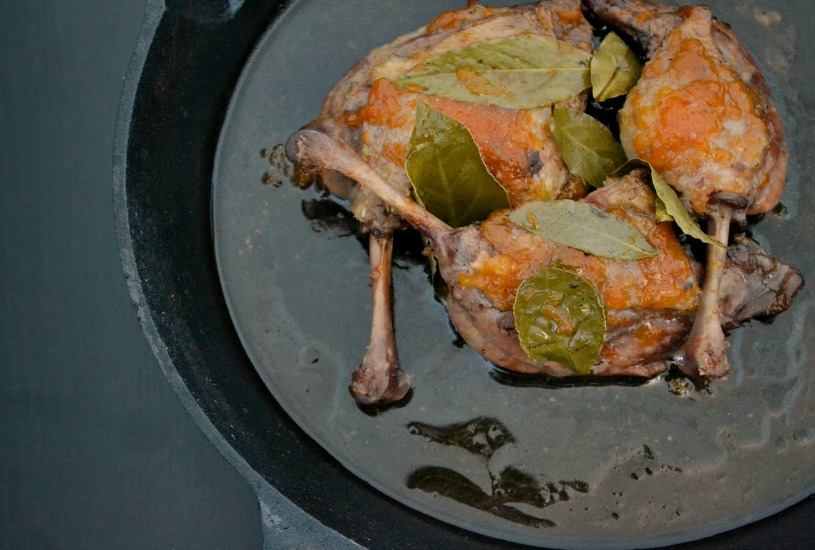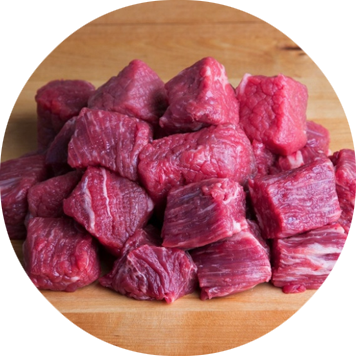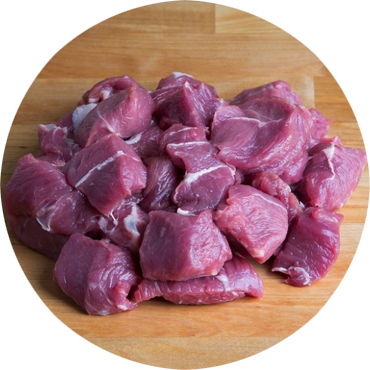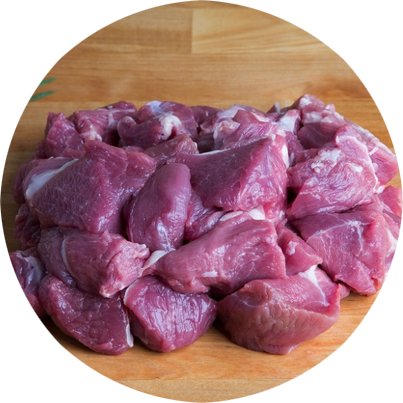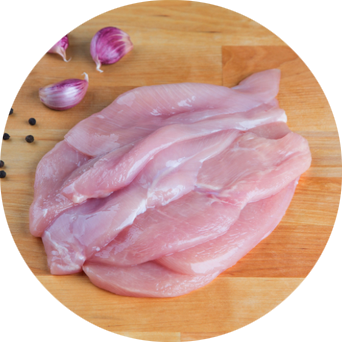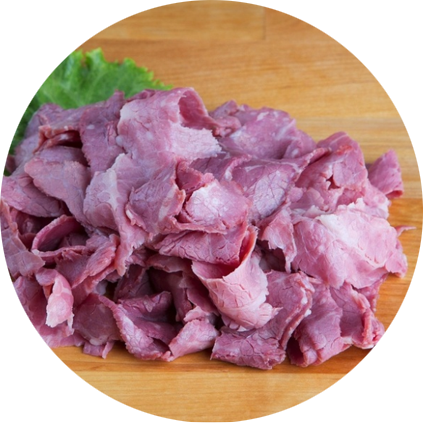- 4lb braising beef or lamb roast (see note)
- 2 teaspoons salt
- Freshly ground pepper to taste
- 1 garlic clove, peeled (2 if cooking lamb)
- 2 tablespoons vegetable oil
- 3 onions, peeled and diced
- One 10-ounce can tomatoes, undrained
- 2 cups red wine (use white wine if cooking lamb)
- 2 stalks celery with the leaves, chopped
- 1 bay leaf
- 1 sprig fresh thyme
- 1 sprig fresh rosemary
- 1/4 cup chopped parsley
- 6 to 8 carrots, peeled and sliced on the diagonal
Note: This recipe for classic tomato, garlic and red-wine braised roast is adapted from the matriarch of Jewish American cooking, Joan Nathan. Her recipe is for brisket, but you can use this recipe for any of our beef, veal or lamb braising roasts. It would also be delicious with Osso Bucco. The recipe calls for a fair amount of liquid, but the amount you will need depends on the size of your roast and the size of your pan. Generally speaking, you want to have the liquid come up about one third or one half of the way up the side of your roast. Exceptions to this rule of thumb are Kalakel, Deckel, Pastrami Roast and Osso Bucco, which should be almost completely submerged (more liquid will accumulate during the cooking). Add more wine, tomato juice, water or chicken broth if you need more liquid, but don’t stress too much about the exact quantities or ratio. The magic happens in the slow cooking. Pour yourself a glass of that wine while you wait!
Sear the Roast
Remove the meat from the fridge about 30-60 minutes before you plan to cook it, so it can come to room temperature (make sure it is fully defrosted). Pat the meat dry. Sprinkle it with salt and pepper and rub it with the garlic. Heat the oil in a Dutch oven or large skillet, add the roast, and sear on all sides. Remove from the heat and transfer meat to a plate.
Braise the Roast
Preheat the oven to 325°F (160°C).
Place the onions in the bottom of the Dutch oven (no need to clean it first). Top with the roast (if your roast has a fat cap, make sure it’s on top). Add the tomatoes and their juices, the red wine, celery, bay leaf, thyme, and rosemary to the casserole.
Cover and bake for about 3 hours, basting often with pan juices. Uncover, add the parsley and carrots, and bake, uncovered, until the carrots are cooked, about 30 minutes more. To test for doneness, stick a fork in the meat. When there is a light pull on the fork as it is removed from the meat, it is “fork tender.”
To serve
Remove the meat from the oven and transfer to a serving dish. Arrange carrots and celery around the roast, and ladle accumulated juices over top. You may wish to serve additional gravy on the side. and spoon over the reduced braising liquid. Scatter pomegranate seeds over them. Serve warm.
Make it ahead
We strongly encourage you to make your roast a day ahead (if more than that, put it in the freezer until the day before you plan to serve it). After taking it out of the oven, let the whole thing cool completely and refrigerate (you may want to take the roast out of the liquid and refrigerate it separately). The next day, scoop off as much of the solidified fat as you can, then reheat the meat in the braising liquid. It is much easier to slice braising roasts when they are cold, but take care to reheat them gently in a tightly covered pan so they don’t dry out.
As far as serving the carrots, celery and onions that were cooked with the roast — you may scoop them out of the sauce and arrange around the meat or in a separate serving dish. You may also puree them along with the liquid to make a thick gravy which can be served alongside the platter of meat. This was Anna’s grandmother’s preferred method!
You can make this recipe with any beef or lamb braising roast. Here are a couple of cuts we love with this recipe:
